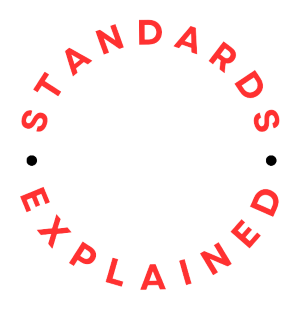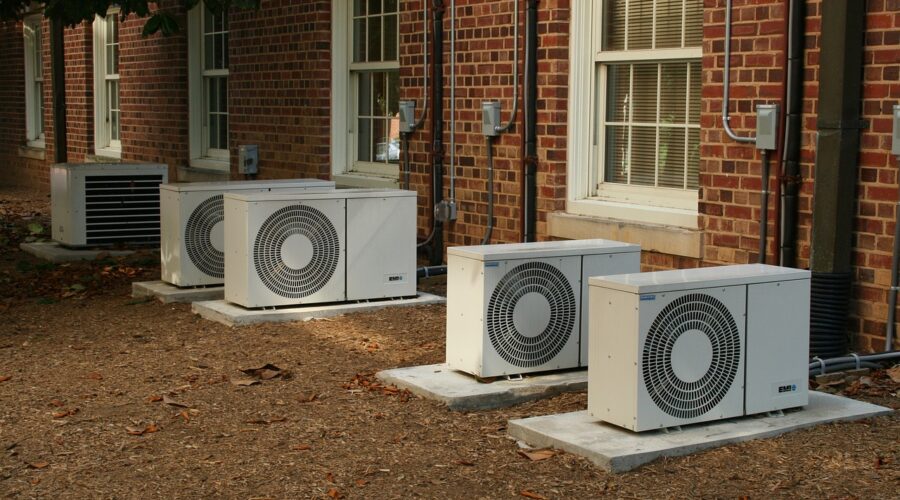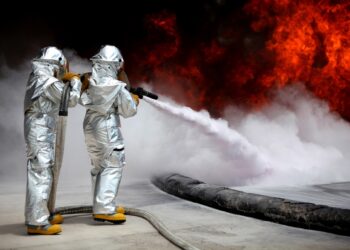ISO 16000 Part 40 (2019) Indoor Air Quality Management System specifies requirements for an indoor air quality management system. It applies to any organization that wishes to:
- establish a system for the management of the quality of indoor air;
- implement, maintain, and continually improve the indoor air quality management system;
- censure conformity to the indoor air quality management system;
- demonstrate conformity to this international standard.
The standard is applicable to the indoor environments of all kinds of facilities, installations and buildings, except those dedicated to industrial or agriculture activities. The standard’s provisions relate to all types of indoor environment occupied by people, including regular users, clients and workers.
The standard was last reviewed and confirmed in 2024; therefore, this version remains current.
What does it cover?
| Introduction |
| 1 Scope |
| 2 Normative references |
| 3 Terms and definitions |
| 4 Context of the organization |
| 4.1 Understanding the organization and its context |
| 4.2 Understanding the needs and expectations of interested parties |
| 4.3 Determining the scope of the indoor air quality management system |
| 4.4 Indoor air quality management system |
| 5 Leadership |
| 5.1 Leadership and commitment |
| 5.2 Policy |
| 5.3 Roles, responsibilities and authorities |
| 5.4 Legal requirements and other requirements |
| 6 Planning |
| 6.1 Actions to address risks and opportunities |
| 6.2 Indoor air quality objectives and planning to achieve them |
| 6.3 Indoor air quality aspects |
| 7 Support |
| 7.1 Resources |
| 7.2 Competence |
| 7.3 Awareness |
| 7.4 Communication |
| 7.5 Documented information |
| 7.6 Infrastructure and maintenance |
| 8 Operation |
| 8.1 Operational planning and control |
| 8.2 Planning indoor air quality |
| 8.3 Purchases |
| 8.4 Operational control |
| 9 Performance evaluation |
| 9.1 Monitoring, measurement, analysis and evaluation |
| 9.2 Internal audit |
| 9.3 Management review |
| 10 Improvement |
| 10.1 Nonconformity and corrective action |
| 10.2 Continual improvement |
| Annex A Identifying and assessing indoor air quality aspects |
| A.1 General |
| A.2 Location of the building |
| A.3 Activities, uses and building layout |
| A.4 Building materials, furnishings and electrical consumer goods |
| A.5 Building facilities and installations |
| A.6 Maintenance of the building; including maintenance and cleaning products |
| A.7 Building renovation |
| Annex B Identifying and assessing indoor air quality aspects: Descriptive system flowchart |
Implementation
Implementing a management system for indoor air quality in conformity with ISO 16000 Part 40 involves several key steps.
Leadership and Commitment
- Obtain leadership commitment and support for the implementation of an indoor air quality management system (IAQMS).
- Establish a clear policy and objectives for indoor air quality – see below.
Establish the Context
- Define the scope and context of the IAQMS.
- Identify relevant stakeholders and their expectations.
Legal and Regulatory Compliance
- Identify and ensure compliance with relevant legal and regulatory requirements related to indoor air quality.
- Stay updated on standards and regulations that pertain to indoor air quality.
Define IAQ Policy and Objectives
- Develop an indoor air quality policy that aligns with the organization’s objectives.
- Set measurable objectives that support the policy.
Risk Assessment
- Conduct a risk assessment to identify potential indoor air quality risks.
- Evaluate the potential impact of indoor air quality on the health and well-being of occupants.
Organizational Structure, Roles and Responsibilities
- Define the organizational structure for indoor air quality management.
- Allocate roles and responsibilities to ensure effective implementation and maintenance of the system.
Competence and Training
- Identify the competencies required for personnel involved in indoor air quality management.
- Develop and implement training programs to ensure personnel have the necessary skills.
Communication
- Establish effective communication processes within the organization regarding indoor air quality.
- Inform and educate building occupants about the importance of indoor air quality.
Documentation and Information Management
- Develop and maintain documentation that supports the IAQMS.
- Implement information management processes to ensure data integrity and accessibility.
IAQ Monitoring and Measurement
- Implement a system for monitoring and measuring indoor air quality parameters specified in ISO 16000 Part 40.
- Regularly measure and assess indoor air quality using appropriate instrumentation and methods.
Ventilation System Management
- Implement measures to manage and maintain ventilation systems effectively.
- Ensure that ventilation systems are designed and operated to meet indoor air quality requirements.
IAQ Data Analysis
- Analyze the collected data to assess indoor air quality performance.
- Identify trends, patterns, and areas for improvement.
Occupant Feedback
- Establish mechanisms for obtaining feedback from building occupants regarding indoor air quality.
- Encourage occupants to report concerns or issues related to indoor air quality.
Emergency Response and Management
- Develop plans and procedures for responding to indoor air quality emergencies.
- Establish protocols for managing situations that could affect indoor air quality.
Performance Evaluation
- Establish key performance indicators (KPIs) to measure the performance of the IAQMS.
- Regularly monitor and evaluate performance against established KPIs.
Continual Improvement
- Implement processes for continual improvement of the IAQMS.
- Conduct regular audits and reviews to identify opportunities for improvement.
Legal and Other Requirements
Identify and ensure compliance with relevant legal and other requirements related to indoor air quality.
Documentation and Record Keeping
Establish processes for document control and record keeping to demonstrate compliance with the standard’s requirements.
External Audits and Certification
- Consider seeking certification against ISO 16000 Part 40 from a recognized certification body.
- Prepare for external audits if certification is pursued.
Occupant Education and Awareness
- Develop programs to educate and raise awareness among building occupants about indoor air quality.
- Encourage behaviors that contribute to maintaining good indoor air quality.
In conclusion…
Remember, the implementation of an IAQMS is an ongoing process. Organizations should continuously monitor, evaluate, and improve their systems to ensure they remain effective in providing a healthy indoor environment for occupants.
ISO 16000 Part 40 can be purchased through the ISO.org website.














Comments (0)